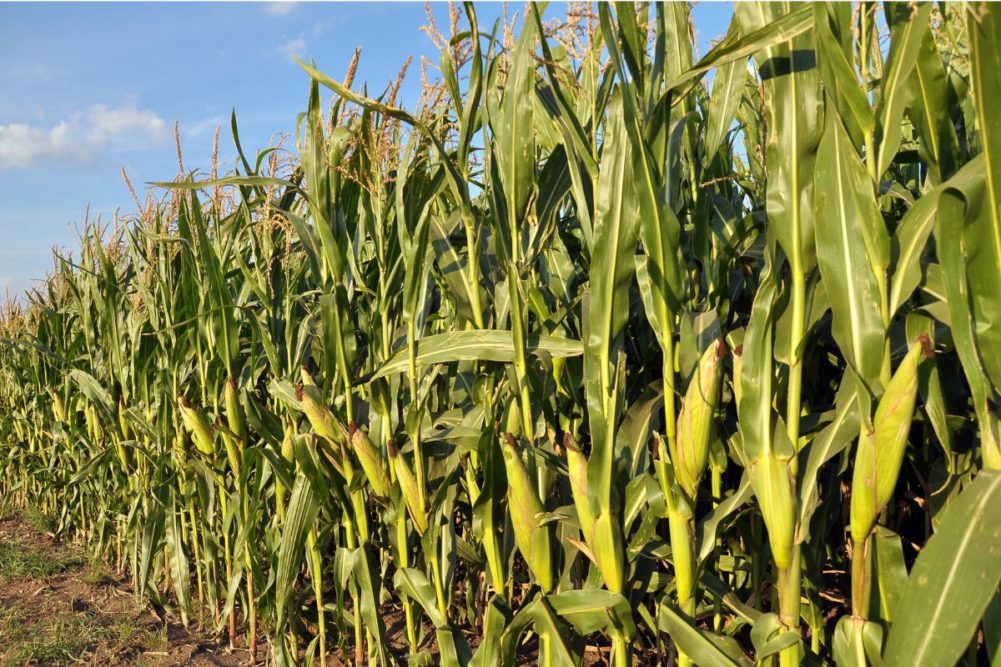LONDON, ENGLAND – A hike in expectations for the US corn (maize) crop and harvest pressure pushed prices lower in recent weeks. Weather and politics are also factors in the market, notably in South America.
The US Department of Agriculture (USDA) injected a bearish note with its Nov. 9 World Agricultural Supply and Demand Estimates Report, raising its figure for 2023-24 US corn production to 386.97 million tonnes from the previous month’s forecast of 382.65 million. It estimates the 2022-23 crop in the United States at 348.37 million tonnes.
The International Grains Council (IGC) said in its Nov. 16 Grain Market Report that its price index for corn had “recently touched a three-month low,” with a fall of 7% in the previous month.
“Losses were recorded at all key origins, but with particularly steep declines in Argentina,” the IGC said.
US corn spot futures fell by 4% month-on-month, weighed by seasonal harvest pressure at times, occasionally tepid overseas buying interest and news of USDA’s record crop estimate, the IGC said.
“Some stabilization was noted in recent weeks, with light support stemming from a pick-up in demand from traditional importers, notably Mexico, as well as mounting uncertainties about Brazilian production prospects,” the IGC said. “Export premiums (Gulf) were softer on increased country movement and some moderation in barge freight markets. Fob prices eased by $13 month-on-month, to $215 fob, and are now quoted at a discount to nearby Brazilian supplies.”
Mainly because of declines in CME futures, spot values in Brazil eased by $4, to $223 fob (Paranagua), the IGC said, but pointed out that “the downside was contained by overall stronger premiums, tied to complicated logistics and this season’s busy export program.”
Barley was down by 2% on the month, “amid weakness at most key origins,” the IGC said. French export values eased “on continued slack exports,” but “losses were contained by recent worries surrounding unfavorably wet weather for the latter stages of the 2024-25 winter seeding program.”
Values in Australia were down on seasonal pressure, while Argentina’s prices fell in the run-up to the start of the harvest, the IGC said.
The European Confederation of Maize Production (CEPM) in its Nov. 20 Corn Market publication, noted that from Nov. 10 to Nov. 17, the price of December delivery in Chicago rose by $4 per tonne to stand at $187 per tonne, buoyed by good demand figures and weather difficulties in South America.
“Export contracts exceeded operators’ expectations, with Japanese purchases in particular,” CEPM said. “In addition, US maize delivered to Asia is now more competitive than its Brazilian competitor, thanks in particular to lower freight costs to the Pacific Northwest.”
The southwest France-headquartered professional group said “ethanol production remains robust and stocks continue to fall.”
“Analysts are also keeping a close eye on developments in Sino-American relations, at a time when the Biden/Xi meeting was intended to ease tensions between the two powers,” CEPM added.
CEPM said that in Brazil, rain is expected in the center-west, but heatwaves are continuing.
“These difficulties will lead to a drop in safrinha maize acreage in early 2024,” CEPM said. “Logistics continue to be complicated by excess rainfall in the south and a marked deficit in the Amazon basin.
“In Argentina, there has been a traditional pause in sowing, before late maize crops resume in December. The Buenos Aires grain exchange has revised the area sown downward by 200 Kha (7.1 Mha) in favor of soya.”
CEPM also highlighted the election of libertarian Javier Milei as president of Argentina.
“During his campaign, he had announced his intention to replace the peso with the dollar and to abolish export taxes on maize and soya,” CEPM said.
Chris Lyddon is World Grain’s European correspondent. He may be contacted at: [email protected].






